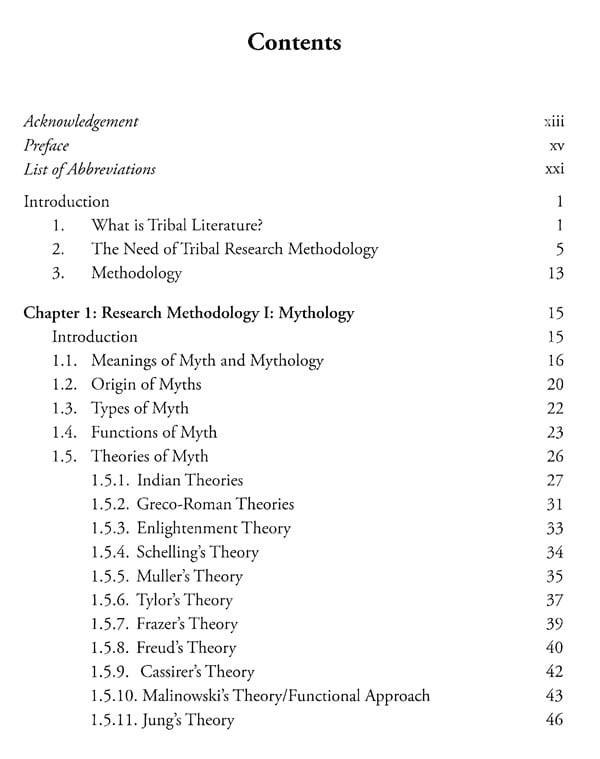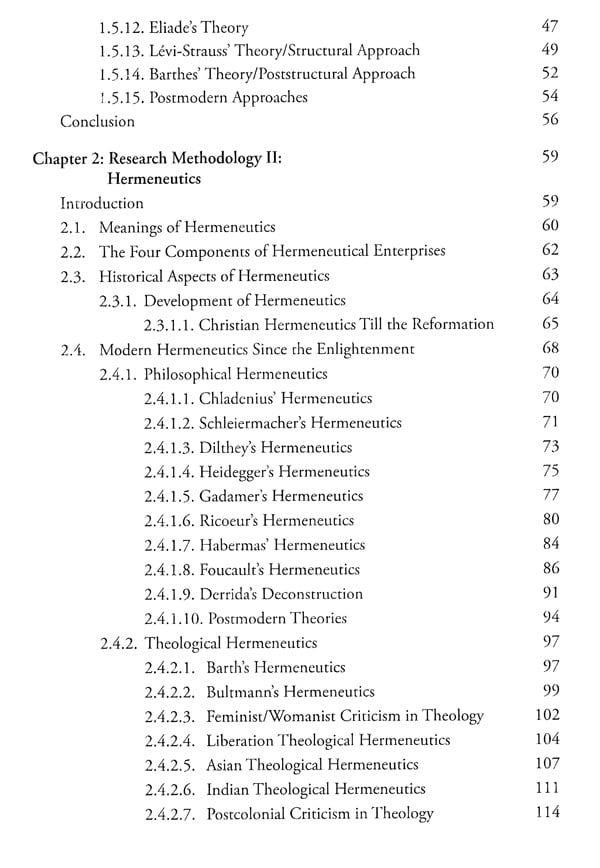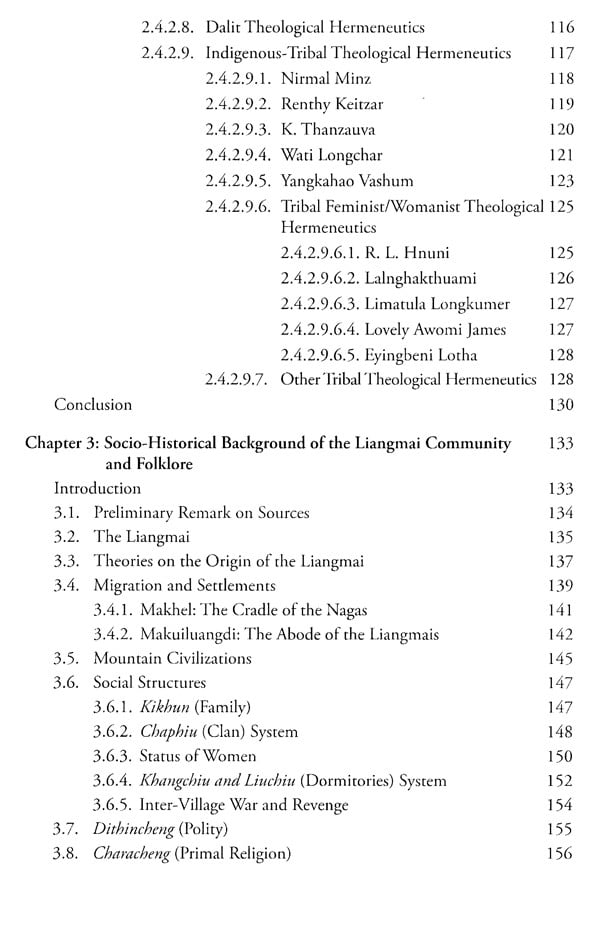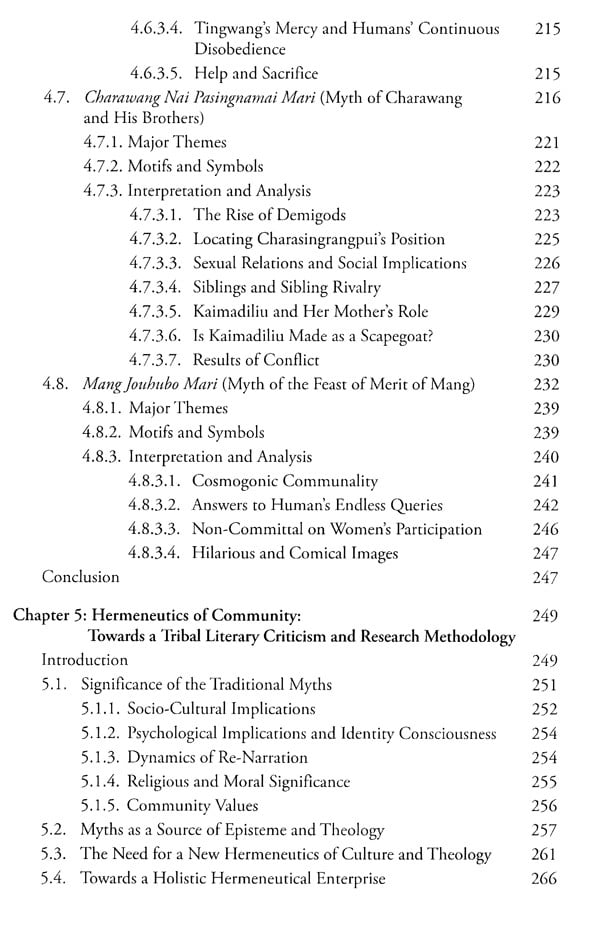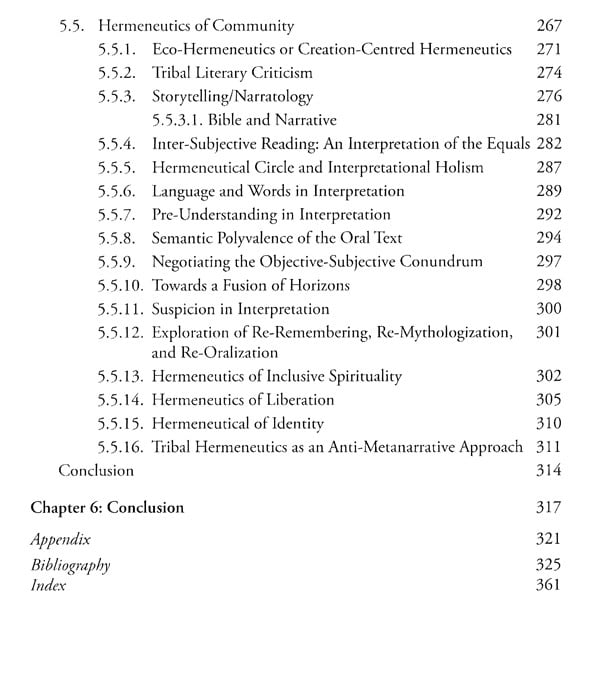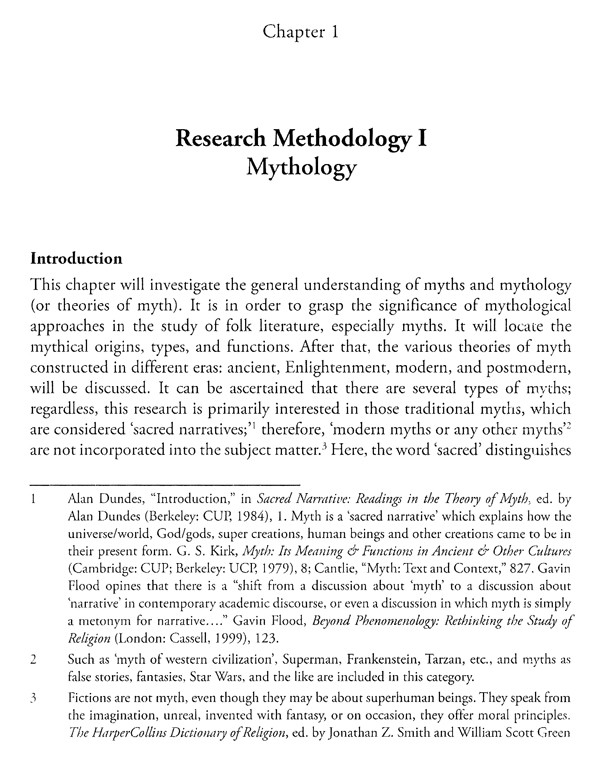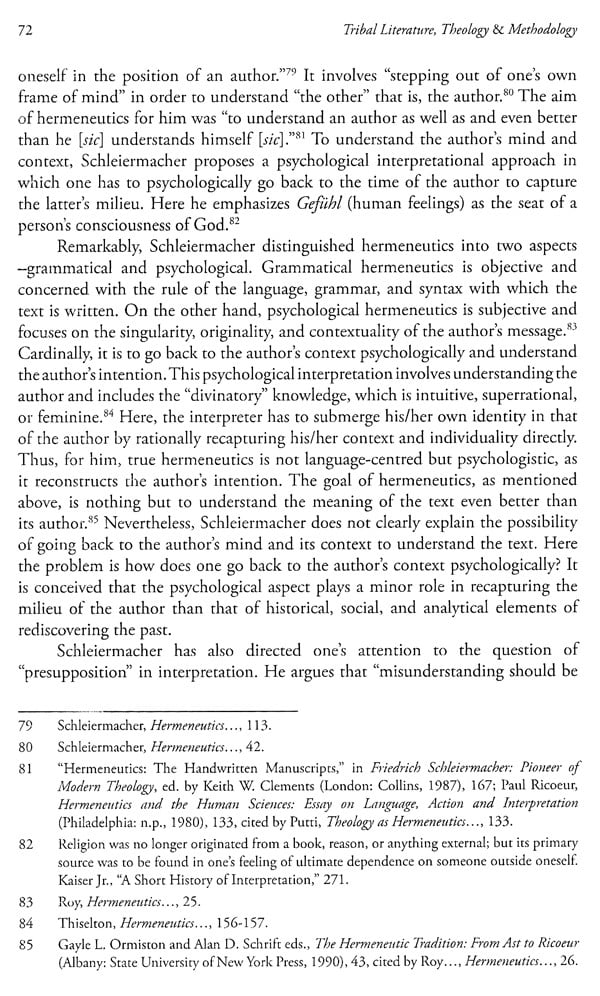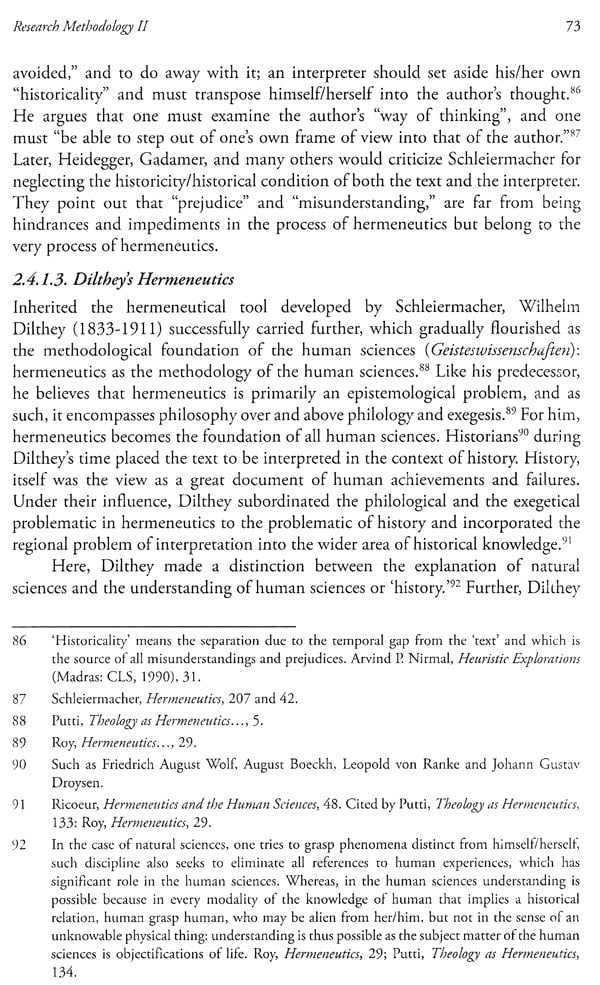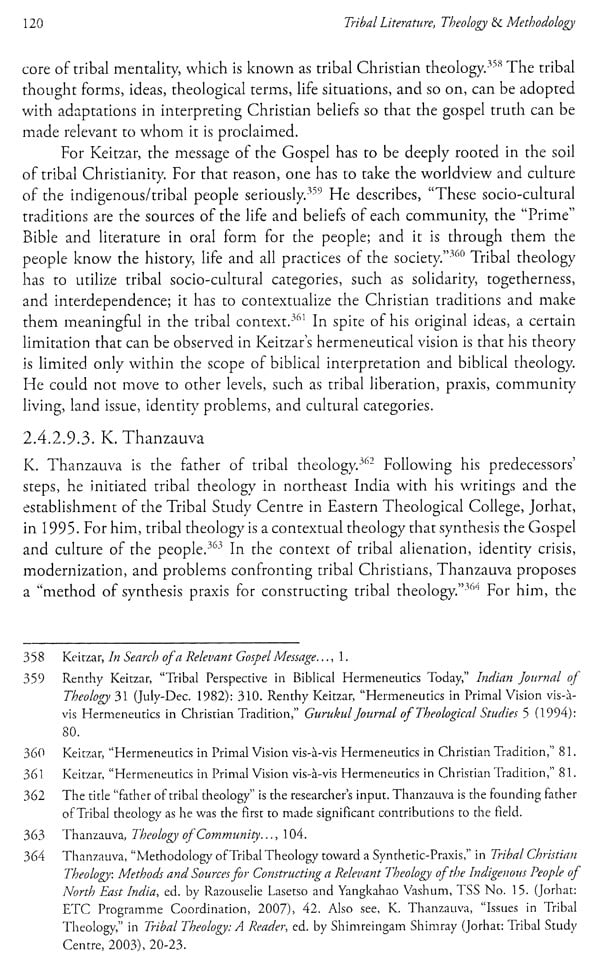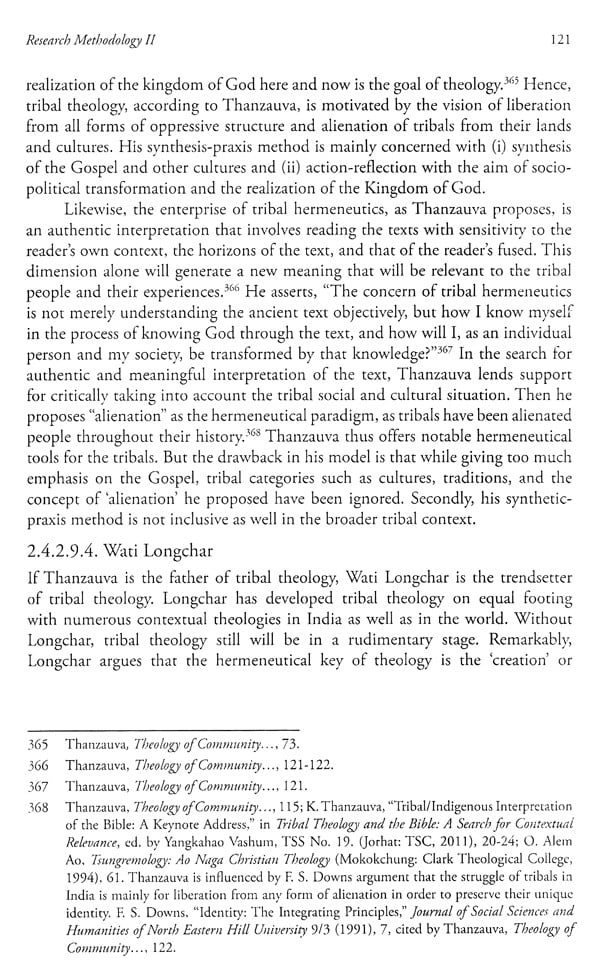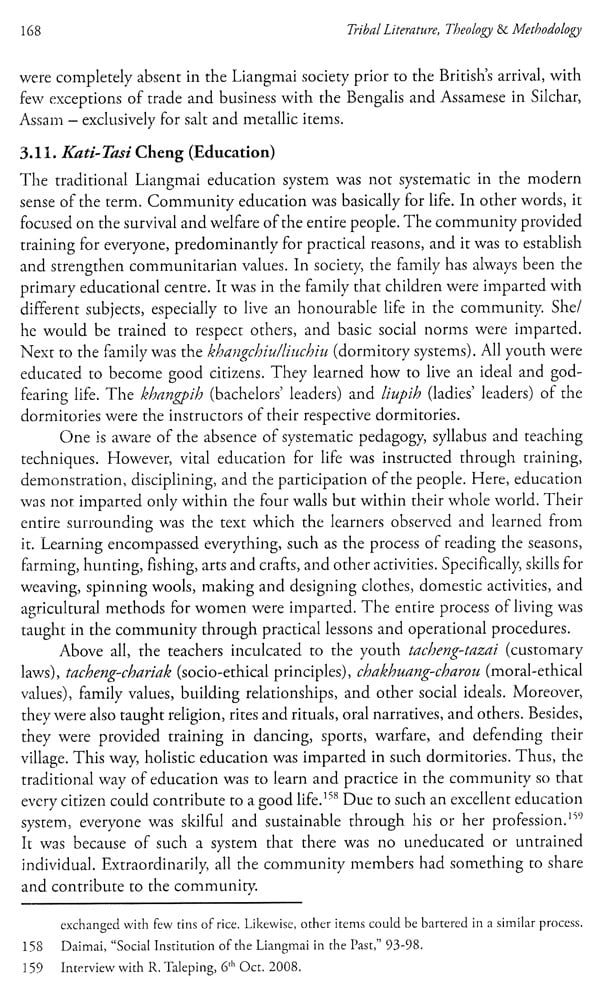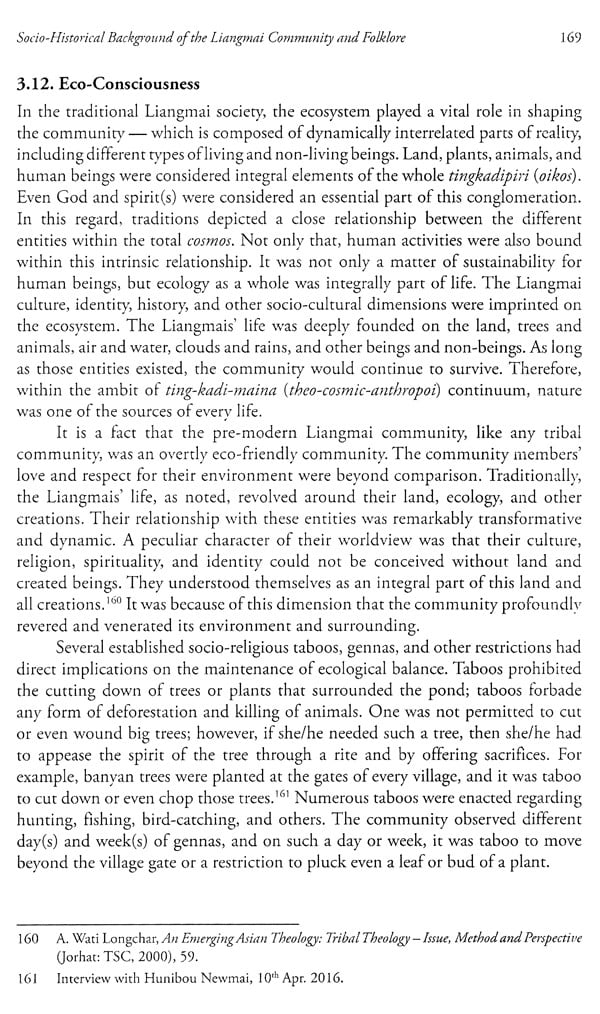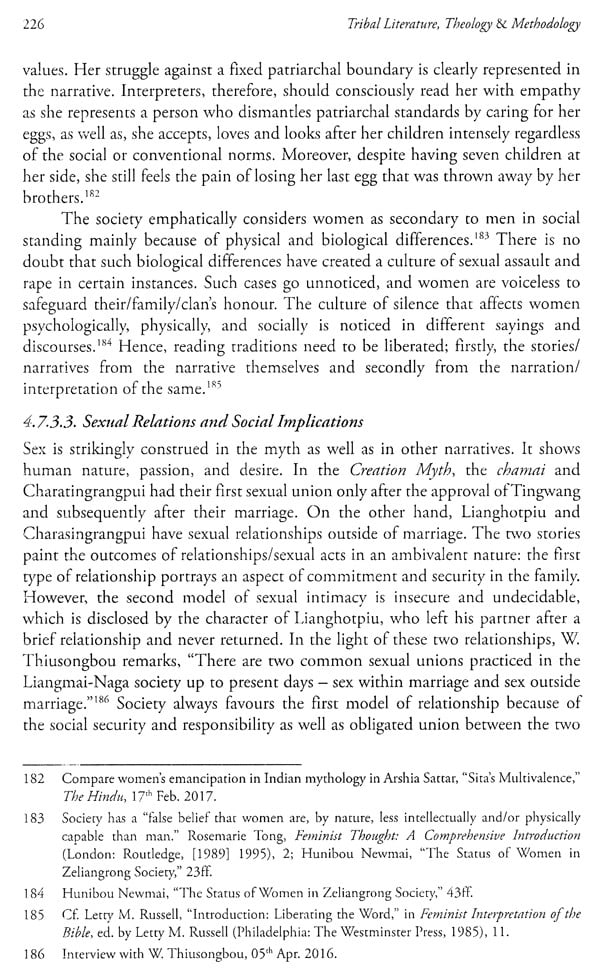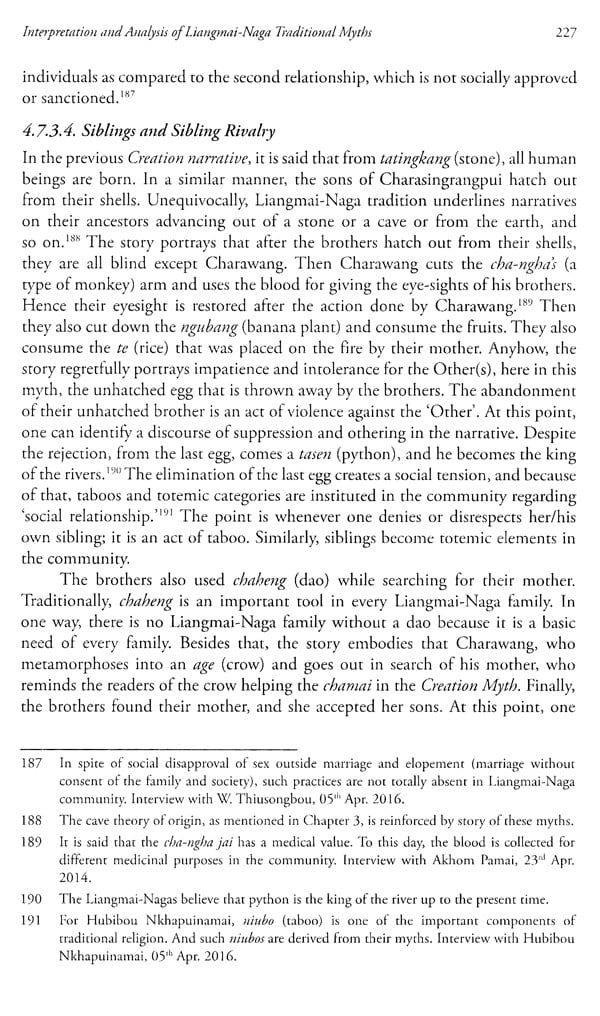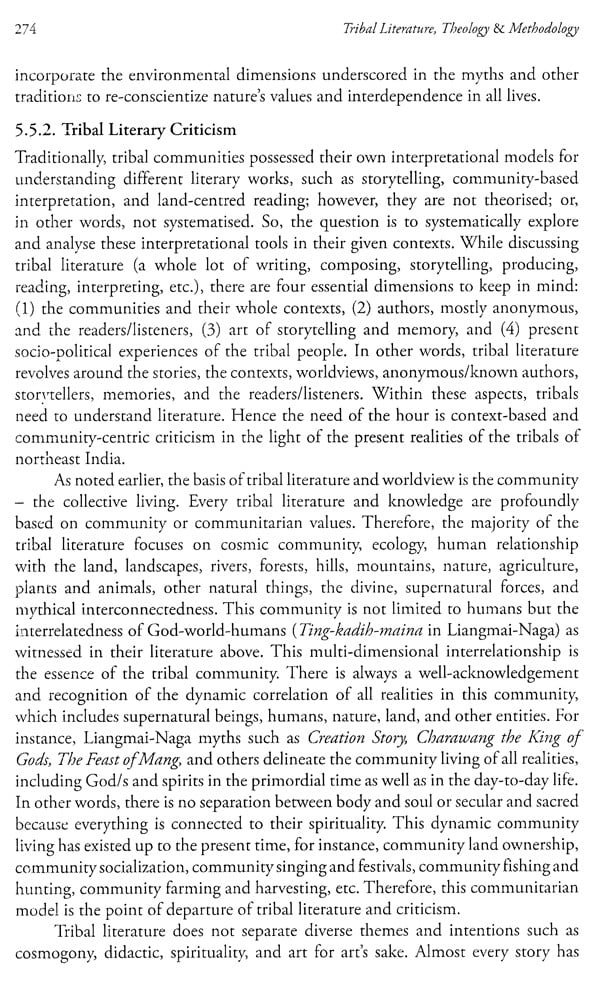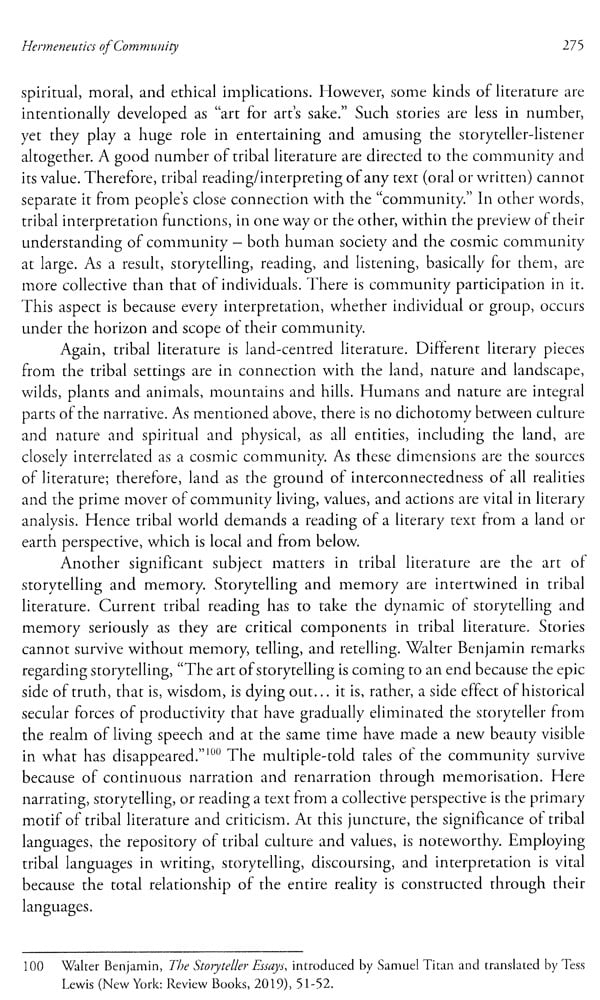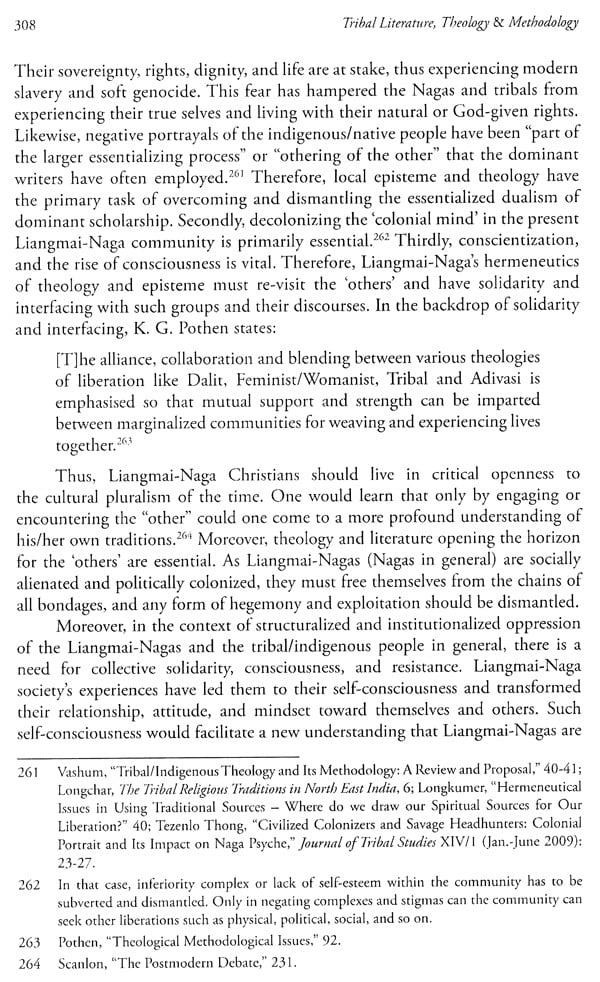
Tribal Literature, Theology & Methodology (Reading Folklore for Developing Tribal Theological Hermeneutics and Literary Criticism)
Book Specification
| Item Code: | UBA150 |
| Author: | M. Maisuangdibou |
| Publisher: | Christian World Imprints, Delhi |
| Language: | English |
| Edition: | 2022 |
| ISBN: | 9789351486435 |
| Pages: | 385 |
| Cover: | HARDCOVER |
| Other Details | 9.50 X 6.50 inch |
| Weight | 790 gm |
Book Description
Tribal episteme in general and literature, philosophy, worldview, and theology in particular represent an emerging voice in the Indian and world literary scenes. Tribal literature is unique of the unique due to its very nature as communitarian, land-centred, egalitarian, resistant, outspoken, and shared aesthetic values. It is eco-friendly, pastoral, mystical, nondualistic, essential unity of all realities, and spiritual- mythical conscious. This literature is the voice of the tribal people on their lives, cultures, worldviews, and religions.
This book attempts to write and develop hermeneutical tools and literary criticism of Tribal literature. It is a methodological exploration by reading tribal myths and worldviews. The book wrestles with several questions and issues on tribal literature: What is tribal literature? How to formulate tribal hermeneutics and literary criticism? How to systematize or methodize traditional tribal interpretational norms? How the self and the community are connected in tribal literature? How to read text(s) from a woman's perspective? How to fuse the diverse horizons? And how to liberate and construct the identity and spirituality of the tribal communities in the (post)modern context? This volume asserts that tribal literature is communitarian, mostly folk and oral, liberative, transformative, eco-centred, open-ended, flux, and plurisignal.
Dr. M. Maisuangdibou teaches theology, literature and philosophy at the Union Biblical Seminary, Pune. He has three masters (English, Philosophy and Theology), two UGC-NETs (English and Philosophy), and a Doctorate in Theology. He is the author of Tribal Theological Hermeneutics; Liangmai and Christianity; and, Liangmai Narratives. He also contributed various articles to national and international journals. He is a writer, theologian, theoretician and literary critic.
The research attempts to construct tribal hermeneutics and literary criticism by reading traditional myths of the Liangmai-Naga tribal community of northeast India. The study is vital because tribal communities of northeast India, such as the Liangmai-Nagas, are distinct indigenous groups with unique cultures, languages, literature, worldviews, and others that need an interpretation model of their own to interpret or read relevantly, contextually and transformatively. As the book aims to construct tribal hermeneutics and criticism, the study advanced an interdisciplinary methodology that includes ethnography, hermeneutics, postmodernism, and feminism. The methods utilized are descriptive-analytical, interviews, and library works. The research chooses thirty-two (32) qualified people from different villages and diverse walks of life in the community for the interviews. The researcher also heavily depends on diverse materials from various libraries and online sources. The study categorically observes and suggests that culture and tradition, such as myths, could provide relevant resources for local hermeneutics in a given context. The overall argument is that religion and theology have to critically use cultural values to make the literature and the Bible more relevant and liberating.
The Liangmai-Naga tribal community has a myriad of folk literature in the forms of myths, folktales, legends, and other oral traditions. They have been the guiding force of the community for so long. However, for instance, myths are almost eliminated in the present time due to the influence of Christianity interpreted through modernity. In this situation, the study attempts to interpret and explore the relevance of myths to facilitate the construction of theological hermeneutics and literary criticism, thus developing a systematic tribal interpretational approach and also to revive the positive cultural and traditional elements from vanishing.
It is a fact that interpretation is indispensable at all levels of life. Whether it is in everyday life, religious-cultural and socio-political dimensions, interpretation and meaning-making are always involved. It is an interpretation that one tries to understand the text. It interlinks between self, individuals, communities, societies, world, subject, object, and phenomena and extends to the transcendental beings, such as God and spirits. In one way, interpretation is universal as every human employs it in one way or the other. However, hermeneutics (i.e., an interpretation theory) and literary criticism (i.c., an evaluation of literary work) as disciplines are context-based; for that reason, there is no universal interpretation model or critique applicable in all situations. Keeping that in mind, there is always a need to formulate and develop hermeneutics and criticism grounded on the people's total reality.
While dealing with the research scope, the study is limited to the Liangmai- Naga tribal community's folk literature, especially the traditional myths. Here, the myths are interpreted and followed by constructing a methodology of interpretation and criticism for the tribal community of northeast India. For this purpose, the researcher employs an interdisciplinary methodology that includes ethnography, hermeneutics, contextualization, postmodernism, and feminism. The methods are descriptive-analytical, interviews, which include library works, and more. It is descriptive and analytical in which myths and their backgrounds are read, interpreted, and analyzed. It construes how the community shaped their oral tradition (here, it refers to myths) and reciprocally how myths moulded and built the community. The study also employs various mythical-anthropological and hermeneutical methods, such as traditional or folklore reading, postmodernism, and feminist reading. The research's overall purpose is a constructive engagement in which myths are read to evolve a theological hermeneutics from the Liangmai- Naga perspective.
1. What is Tribal Literature?
Tribal-indigenous' communities are one of the unique groups in India and the world with distinct cultures, languages, worldviews, and literature. They have an abundance of literature, especially in the form of folklore or oral tradition that has rich literary insights. Tribal folk literature is remarkably the driving force of the communities in defining their identities, civilisations, cultures, histories, and traditions. In other words, their cultures, religions, worldviews, and other community traits are profoundly embedded in their literature. Therefore, tribal literature cannot be read or interpreted at its face value. There are nuance insights. and hidden meanings that open up the whole world of the tribals in their literature.Tribal literature means the fictional, imaginative, creative, factual, and other literary works produced in the tribal world. It is an expression of their worldview, philosophy, religion, culture, and day-to-day life using language in a particular way. This literature is primarily oral and a few in written forms. The critical component of any expression or text to be a literary work is by defamiliarising the familiar language or making the language strange. Therefore, the distinction of literature from other expressions is its arts, aesthetics, and literariness. Here, the uniqueness of tribal literature from the rest of the literature is the importance given to the collective. In that sense, tribal literature can be called a community literature. This tribal literature, which is primarily in the form of stories, is seen as a community work and less of an individual product. It is the community that produces, safeguards, and transmits it; hence, one will find very less of individual authorship in tribal literature. This traditionally differently-literate society has literature of its own. Today, this tribal literature is not limited only to tribal authors but extended to the others (non-tribals) who work on the tribals (about their traditional and contemporary ways).
Tribal literature can be divided into two categories: oral and written. Oral literature, which is oral or spoken in nature and passed down intergenerationally, existed in the tribal community throughout history, and it has been one of the guiding forces of the community. Here, memory is a dynamic tool in passing down the oral narratives from one generation to another. In this respect, KB Veio Pou comments, "Oral tradition is much more than just the songs and stories that memorialise the history of the people, it constitutes the philosophy and the life world of a people." On the other hand, written literature began in the tribal community only in the 19th century with the introduction of Roman script by the British colonial power and Christian missionaries. References to tribal people are established and available in different accounts, books, chronicles, and others from ancient times; however, these are only indications without substantial explorations and analyses. Therefore, it is clear that the origin of tribal writing began only a century ago, and oral sources influence its storylines. On this subject, Zoramdinthara asserts, "The interface between folk literature and modern [written] literature where the latter is inspired by the former in one way or the other is a literary phenomenon.
**Contents and Sample Pages**

